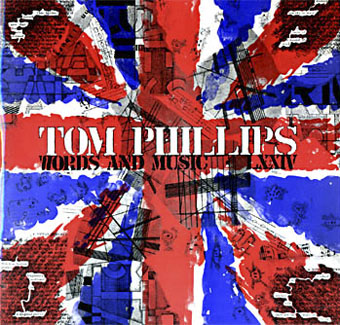
Words and Music (1975) by Tom Phillips.
Two related posts is coincidence, three is a series. Earlier posts from the past couple of weeks looked at album covers created by designers better known for their work in other areas. Tom Phillips is a British artist, writer and composer who I continue to insist is one of our greatest living artists, a figure of singular intelligence, invention and versatility whose lack of grandstanding has never raised his profile to, say, the Hockney level. Phillips’ involvement with the music world, both as composer/librettist, and his oft-cited position as Brian Eno’s art teacher in the 1960s, have led to the creation of a handful of record and CD covers from the mid-70s on. Before we get onto those I’ll note that Phillips has a piece in the latest edition of Eye magazine where he reviews a book of postcards from the Wiener Werkstätte. I happen to have a review in the same issue looking at a republished Kenneth Anger study.
Words and Music above has a January 1975 release date although the cover clearly states “LXXIV” in Phillips’ customary stencil lettering. The pressing was limited to 500 copies and doesn’t seem to have been reissued since which means that copies for sale command excessive prices. Side A comprises recordings of Phillips’ compositions while on the flip the artist/author reads extracts from A Humument, the treated book/experimental novel which is not only his most celebrated work but a project whose influence permeates all of the Phillips oeuvre, including the sleeve art.
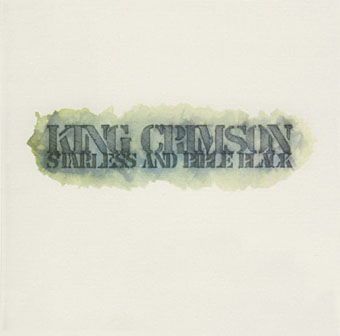
Starless and Bible Black (1974) by King Crimson.
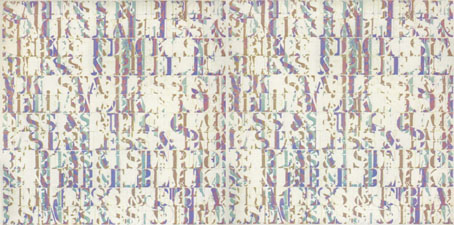
A year before Words and Music, Phillips created the cover art for this King Crimson album, and he’s also credited with the design. The fractured stencil lettering on the gatefold interior resembles similar effects in some of Phillips’ paintings while on the back cover there’s a tiny extract from A Humument bearing the enigmatic phrase “this night wounds time”. I’ve wondered for years how this cover came about: Robert Fripp often selects the art for King Crimson’s covers so was Phillips his choice as artist/designer? Or was it a result of the Fripp and Eno connection? If anyone knows the answer, please leave a comment.
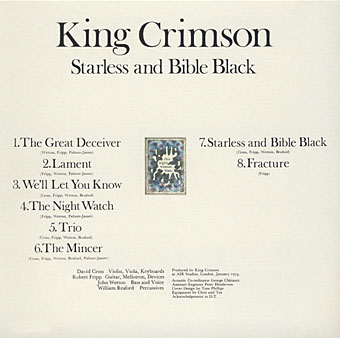
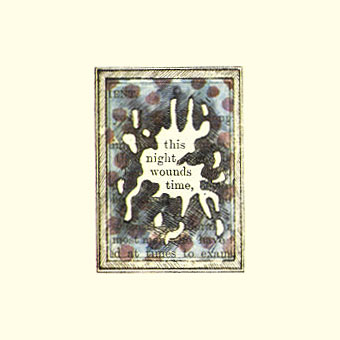
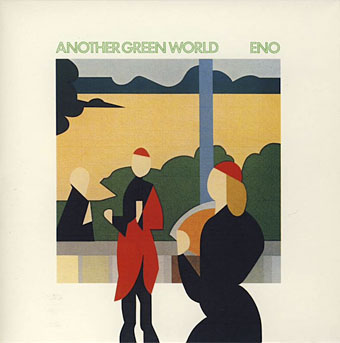
Another Green World (1975) by Brian Eno.
And speaking of Eno, the painting on Another Green World is probably the most visible example of Phillips sleeve art, a detail from After Raphael (below). Phillips explains the genesis of the original work here.
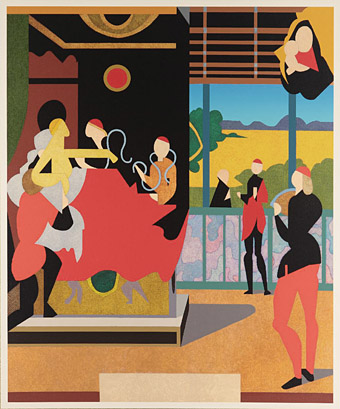
After Raphael (1972) by Tom Phillips.
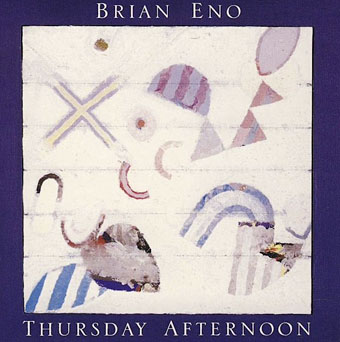
Thursday Afternoon (1985) by Brian Eno. Painting by Tom Phillips, design by Russell Mills.
An abstract watercolour miniature fills out the CD insert for one of Eno’s finest albums.
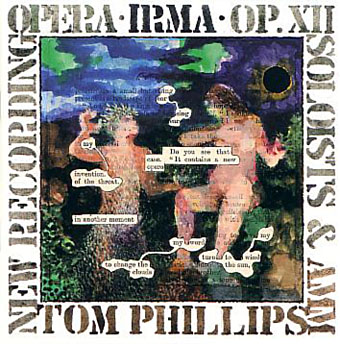
IRMA (1988) by AMM & Tom Phillips.
IRMA is the opera Phillips composed in 1969 with a libretto created via extracts from A Humument. The first recording appeared on Eno’s Obscure label in 1978 where it had one of the collage sleeves designed by John Bonis for most of the records in that series. In his book Works and Texts (1992) Phillips expresses dissatisfaction with the way the composition was credited to arranger Gavin Bryars with “libretto by Fred Orton”. The new recording by AMM featured John Tilbury who played on Words and Music, and is a lot closer to Phillips’ original intention. Despite Phillips’ reservations I quite like the Obscure version which you can hear for yourself at Ubuweb.
Update: Thanks to Lucy Drury for pointing to some recent Phillips covers I’d missed.
Album, EP and single covers for Dark Star (1998–99).
British band Dark Star had a short career but several of their releases come with Humument-style cover art.
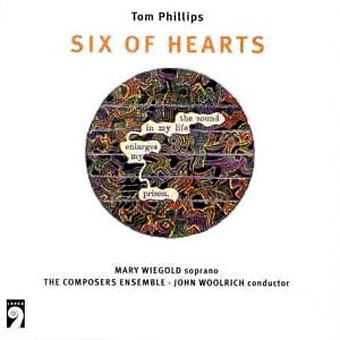
Six of Hearts (1999) by Tom Phillips.
A recording of another Phillips composition with the familiar Humument cover treatment.
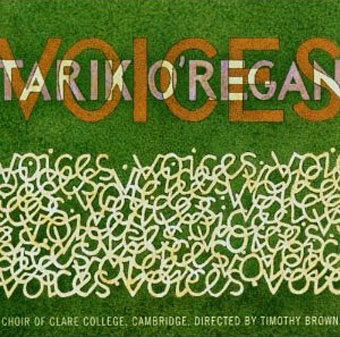
Voices (2006) by Tarik O’Regan.
Composer Tarik O’Regan‘s recent opera adaptation of Heart of Darkness features a libretto by Tom Phillips so it’s no surprise the artist has provided a cover for another O’Regan opus. Heart of Darkness has been well-received as the reviews here demonstrate.
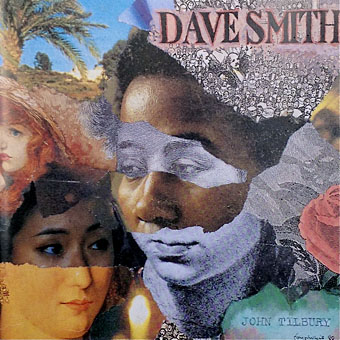
Dave Smith’s First Piano Concert (1988).
And another one. Thanks to David Jennings for the scan.
Elsewhere on { feuilleton }
• The album covers archive
Previously on { feuilleton }
• Thursday Afternoon by Brian Eno
• A TV Dante by Tom Phillips and Peter Greenaway
• 20 Sites n Years revisited
• 20 Sites n Years by Tom Phillips

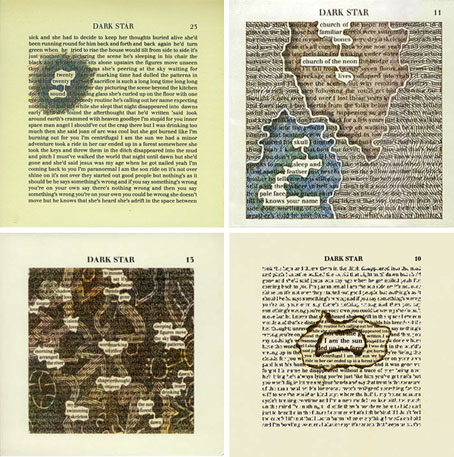
John,
A fascinating post. I’m in total agreement about Tom Phillips – I think the man is one of the most important people in British cultural life, but vastly and disgracefully underappreciated. I’ve always loved A Humument since I first learned of it and still leaf through it regularly in wonderment. I was not at all familiar with his album cover work, however, and your article here has been both eye-opening and stimulating. Keep up the good work – best regards.
I loved this post. Here are some others by Tom Phillips too
Twenty Twenty Sound: Dark Star (1998)
http://www.fastersound.co.uk/soundofawake/discography.html
Portrait of Pete Townshend on Face Dances: The Who (1981)
Tarik O Regan: Voices (2006)
Tom Phillips: Intervalles (1979)
Tom Phillips: Six of Hearts (1999)
Hi Lucy, and thanks for the additional information, I was relying on my own memory and the often gap-ridden Discogs listings so I felt there might be some examples I’d missed. Dark Star are a band that I don’t recall noticing before. The Who album doesn’t quite fit the bill since it’s ostensibly a Peter Blake cover with guest artists. And Intervalles is on Discogs but I omitted that one since it’s a rather poor design although I’m sure the content is interesting enough.
I like his Python portraits
http://www.tomphillips.co.uk/portrait/mpyt/index.html
I like all his portraits. The only painting I’ve seen for real is the Iris Murdoch in the National Portrait Gallery although I seem to recall having seen that Who cover painting in the Tate years ago.
According to Sid Smith’s essential (and out of print alas) In The Court Of King Crimson (p.178-9), ‘several photographs of the group were taken at Air [Studios] for promotional purposes and possible use on the album sleeve. But the band opted instead to use the talents of Tom Phillips, who had been suggested to Fripp by Brian Eno, one of Phillips’ former students. At a time when elaborate sleeves were in vogue – a trend in part started by Crimson – the band opted for the glacial simplicity of Phillips’ black text stencilled on to an umambiguously white background, in stark and telling contrast to the title. The austere cover gave way inside to a dizzying blur of words based on an earlier painting called Here We Exemplify, completed in 1970. This particularly impressed [John] Wetton, as did the various associated phrases employed by the artist, such as the back cover’s ‘this night wounds time’, taken from page 222 of Phillips’ epic work A Humament‘.
Excellent, thanks!
The music of Robert Fripp, in particular, King Crimson’s by extentions, was profoun dly changed (for the better) after his first collaboration with Eno, so I believe the influence of Eno on the choosing of this cover was great.
Thanks for this collection, John. Here’s one more for you: Dave Smith’s First Piano Concert.
Hi David, and thanks, I did notice that one earlier at Discogs.com where TP is credited with the cover. A shame there doesn’t seem to be a larger image of it anywhere otherwise I’d add it to the list above.
John,
Tom also did the notes and artwork on the back of the original IRMA release (Obscure 9).
Rory
Rory, really? I’ve got two copies of that release and on both of mine there is part of Tom’s graphic score for Irma but the notes are by Gavin Bryars and are quite contentious since they go under the title “On composing Tom Phillips’ Irma”. I believe Tom took exception to this on the grounds that he’d already composed it himself. He refers to the Bryars version as “a bit of a disaster” and the cause of the only dispute he had with Brian Eno (who curated the Obscure series). I’d be very interested to know if another version was released with notes by Tom.